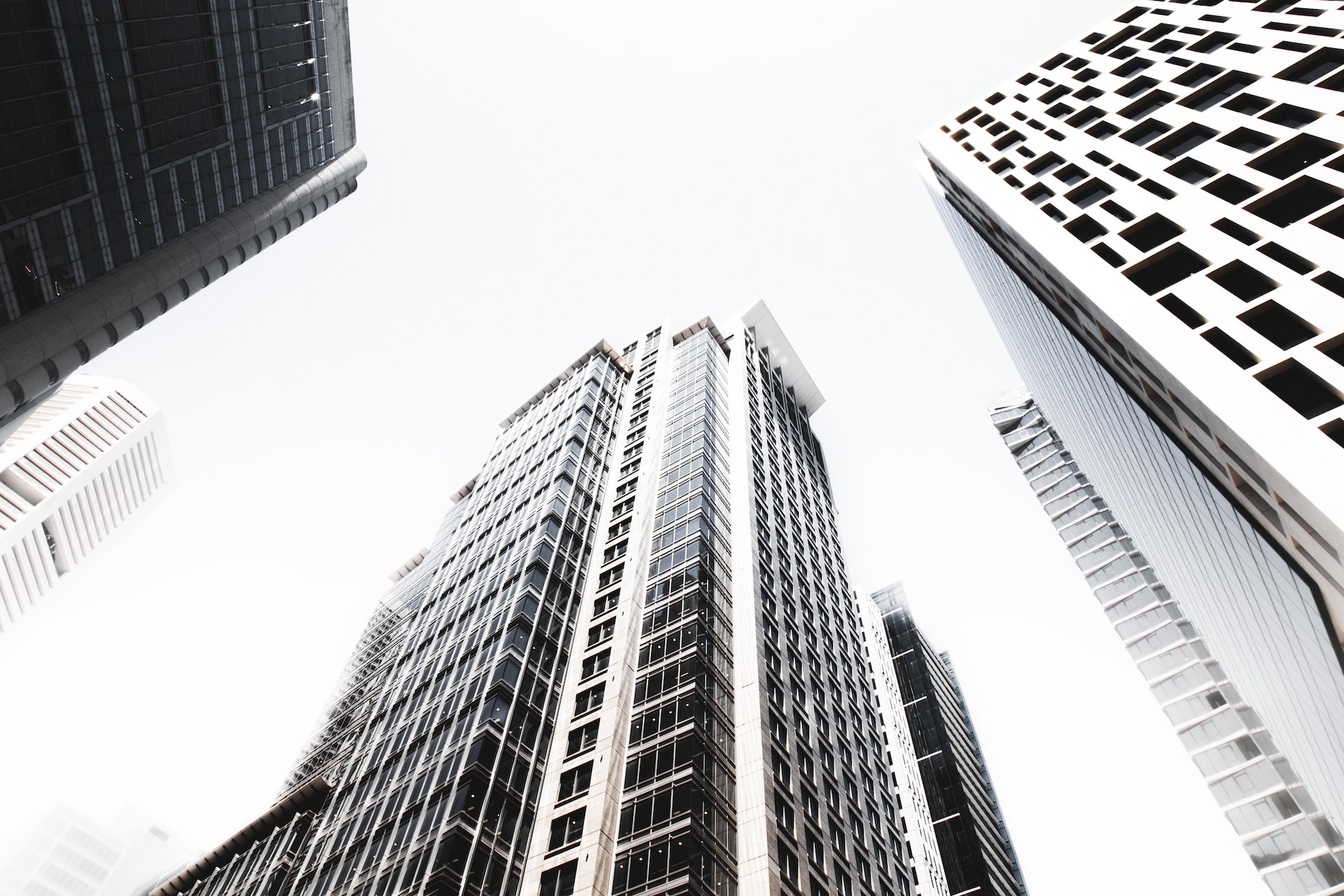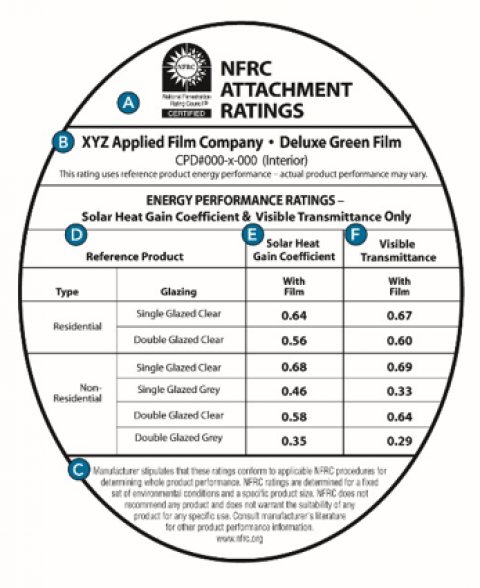
Energy-efficient window films are designed to improve window performance by rejecting solar heat gain. Although certain films absorb solar radiation rather than reflect it. However, this can reduce their effectiveness because the absorbed energy can and often does transfer into the building. Moreover, if window films are applied to the interior of a glass window or door, the residual heat may be greater, thus increasing the interior temperature.
This is referred to as the Solar Heat Gain Co-efficient (SHGC). SHGC is the measurement of heat that enters a building or structure because of solar radiation. There are two important measurements that are provided on a label issued by the National Fenestration Rating Council (NFRC), attached to every window film. They are the Solar Heat Gain Co-efficient (SHGC) and Visible Transmittance (VT).
Visible transmittance describes the amount of visible light that transmits through a glass window or door into a building. Both measurement scales are 0 to 1. The lower the SHGC, the better the film is at blocking heat gain. The higher the VT, the more potential for natural daylighting to enter the building. Additional attributes of window films include glare reduction, UV (ultra-violet rays) and IR (Infrared) blockage, U-factor (rate of heat loss), and safety functions, determined by the type of window film you apply.
Window films have a minimum of three layers: a pressure-sensitive or water-activated clear adhesive layer that is applied against the glass, a polyester film layer, and a scratch-resistant coating. Some window films have metals made into them to help reject solar heat gain. Others may have a moderate to heavy tint. Window films average 2-7 mils thick (50-75 microns) and come on rolls from 36 to 72 inches wide. Let’s dive in and learn more.
Sun Control window film
Sun control window film performs as it sounds. This film helps to block or reduce both glare and heat that result from the sun’s rays. Both UV (ultra-violet) and IR (Infrared) rays transmit into a building through glass – whether that be windows or doors.
Standard window films have a SHGC ranging from 0.70 to 0.81. This means that 19% to 30% of heat is reflected back into the room, which helps reduce heating costs. Property owners in colder climates often prefer a window film that reflects more solar heat into the office space to save on monthly utilities. Taking into consideration your climate and the building’s orientation to the sun ensures that you make the best possible choice in a window film solution.

- A) Rated by NFRC.
- B) Manufacturer and product name.
- C) Details on NFRC rating procedures.
- D) Reference Product column shows what type of glazing works best with the film.
- E) Solar Heat Gain Coefficient (SHGC).
- F) Visible Transmittance (VT).
Low emissivity
Low-e products perform well in all climates. This window film reduces energy costs, improves windowpane performance, and makes your building more energy efficient. In essence, this window film adds a thermal layer of protection to your glass windows or doors.
Emissivity determines a film’s insulation performance. The scale is a mere 0 to 1. The higher the number the less heat is reflected back into the room. Southern regions with warmer clients may prefer their number to be smaller and northern, colder climates generally prefer a higher number. Ultimately, Low-E window films have the ability to reduce winter heat loss and increase thermal comfort within a space.
In general, Low-E films have a standard 33 rating for solar heat gain co-efficient which means that 67% of the heat gain is transmitted into the building. However, some new Low-E window films have a rating as low as 0.07 or 7. This means that 93% of the heat is reflected back into the office space. So, if your priority is saving on utilities, particularly heating costs, Low-E window film can be very beneficial in that regard.
A powerful descriptor of Low-E window films comes from their ability to insulate. Low-emissivity window films can take a single-pane window to double-pane, and a double-pane to triple. This window film is applied to the inside surface of glass windows or doors. Low-e film is considered an all-season film. It helps reduce solar heat gain in the summer and retain heat in the winter.
The newer version of Low-E window film tends to have a more transparent appearance compared to standard window film, allowing natural light while minimizing heat. However, this is a more expensive option, and the warranty is not as long as standard reflective window film.
Spectrally select film
3M™ Spectrally selective window films, also known as the Prestige™ series are Low-E window films. This product is often preferable for those who want to block some portions of the sunlight spectrum to reduce unwanted solar heat gain while allowing other portions of the solar spectrum to pass through the window, which maintains premier visibility.
These advanced films feature high-tech coatings for glazing that allow unparalleled heat reduction with minimal change in glass aesthetics. In other words, if you didn’t know what you were looking for, you wouldn’t even know it was there.
3M™ Prestige window films are metal-free. This series freely allows the transmission of 5G signals, with no obstruction. Furthermore, your investment will have none of the reflections typically associated with high-performing metalized films. In fact, this ultra-clear solar film is even less reflective than natural glass.
Exterior versions of spectrally select window films are among the highest-performing solar films on the market, particularly when applied to dual-pane glass. This window film series offers the highest ratio of light transmission to heat rejection. Because this application allows for more natural light it is an excellent solution for hospitals, hotels, retailers, and other high-end properties.
Reflective window film
Reflective window films are easier to discern when viewing a building. These films often appear as a mirror to an on-looker. Varying degrees of darkness are available within the reflective film classification. Reflective films with a silver, mirror effect is commonly more effective than the more transparent options. On average they block out 78% of solar heat gain through your glass windows or doors.
Reflective window films include one-way, dual-reflective, and reflective or mirrored. When you review a reflective mirrored window film from outside of the building you can’t see in. So, if additional privacy is important to you, this film may fit the bill. In addition, one-way window films allow people on the inside of a building to see out without those on the outside seeing in.
And finally, dual-reflection window film is designed to offer privacy during the day and reduce reflections at night. It’s called dual-reflective window film because both sides of the film offer benefits. The outside layer is created to be highly reflective so that people outside can’t see in during the daytime. Meanwhile, the inner layer helps to improve visual clarity at night from within the building.
These window films are ideal for east or west-facing windows. These east or west-facing glass surfaces are best served with a reflective film as they have a greater potential for heat gain. North-facing windows don’t benefit from this type of film and south-facing only minimally. It isn’t unusual for commercial buildings to use different types of film on a single building according to its orientation to the sun.
Ceramic window film
Ceramic window film is made with nanotechnology. Nanotechnology is the use of matter on an atomic, molecular, and supramolecular scale for industrial purposes. This particular type of window film provides optimum clarity, low reflectivity, and outstanding infrared heat rejection. Ceramic window tint films stand the test of time, resisting both fading and corrosion.
Carbon ceramic window film protects against both solar heat and sunlight. It rejects 80% of the sun’s infrared light to reduce energy costs while also blocking more than 99% of the sun’s harmful UV rays. Infrared rays are most responsible for the fading of interior furnishings from the sun. Thus, this window film helps reduce fading inside the building. Moreover, this film maintains its color and appearance well over time.
Heat control window film
Heat control window film is beneficial for both colder and warmer climates as it saves on both cooling and heating costs year-round. This film can also act as a form of insulation for windows whether you want to keep solar heat gain out in the summer or in during the winter.
Commercial buildings with thousands of windows often battle hot and cold spaces in different areas. The side of the building that receives the most sun, may require a heat control window film while a different side, completely shaded from the sun may require a different type of window film. This isn’t unusual and is part of the reason why there are so many window film options.
Conclusion
Overall, both standard and Low-E window films are ideal for tackling energy consumption costs. Your building’s orientation and location will help determine what type of window film will have the greatest impact on your building’s energy efficiency. If you still have lingering questions, we have answers.
NGS offers a complimentary energy-building modeling assessment. Using government-approved software. this process affords property owners the assurance of the best possible window film solution, as well as what expectations should be for productivity, energy efficiency, and ROI. Typically, window film installations pay for themselves in 3 to 5 years.
As the recently passed IRA is providing both tax incentives and rebates on particular energy-efficient products, commercial property owners can expect an even swifter return on investment. If you have questions regarding tax incentives, rebates, or grants for your next window film project, our expert team can help there as well. Hope to hear from you soon!



